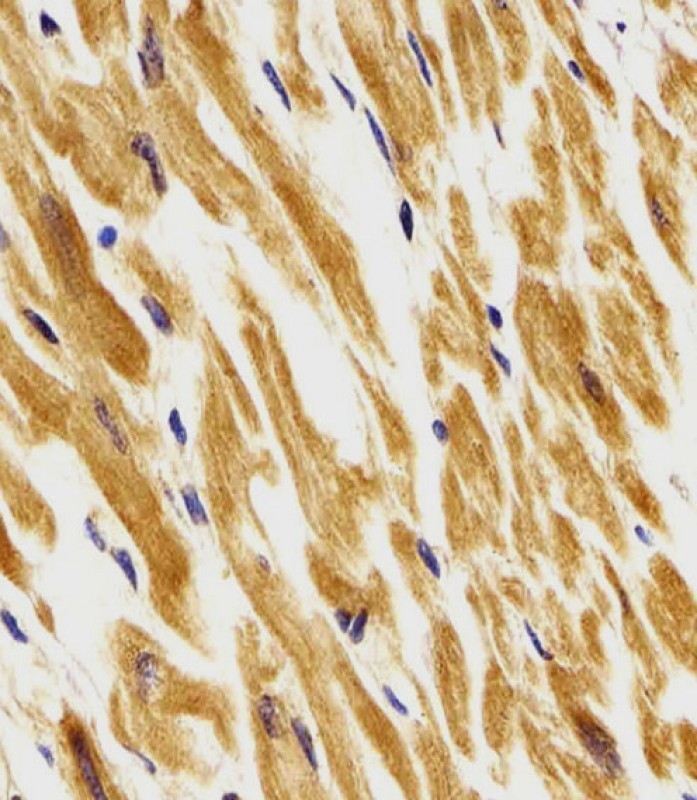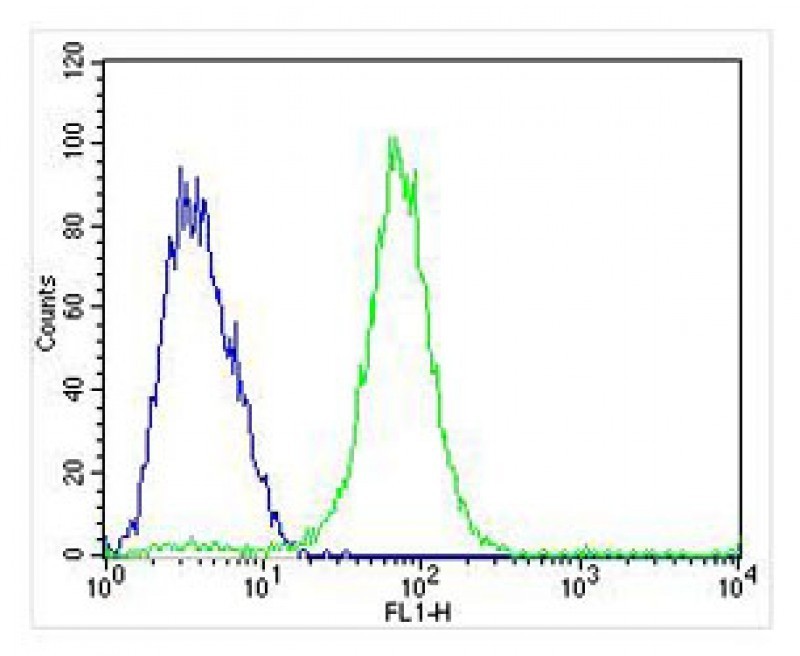CCL15 Antibody
Purified Rabbit Polyclonal Antibody (Pab)
- 产品详情
- 实验流程
- 背景知识
Application
| WB, FC, IHC-P |
|---|---|
| Primary Accession | Q16663 |
| Reactivity | Human |
| Host | Rabbit |
| Clonality | Polyclonal |
| Calculated MW | 12236 Da |
| Isotype | Rabbit IgG |
| Antigen Source | HUMAN |
| Gene ID | 6359 |
|---|---|
| Other Names | C-C motif chemokine 15, Chemokine CC-2, HCC-2, Leukotactin-1, LKN-1, MIP-1 delta, Macrophage inflammatory protein 5, MIP-5, Mrp-2b, NCC-3, Small-inducible cytokine A15, CCL15(22-92), CCL15(25-92), CCL15(29-92), CCL15, MIP5, NCC3, SCYA15 |
| Dilution | WB~~1:1000 FC~~1:25 IHC-P~~1:100~500 |
| Target/Specificity | This CCL15 antibody is generated from a rabbit immunized with a recombinant protein. |
| Format | Purified polyclonal antibody supplied in PBS with 0.09% (W/V) sodium azide. This antibody is purified through a protein A column, followed by peptide affinity purification. |
| Storage | Maintain refrigerated at 2-8°C for up to 2 weeks. For long term storage store at -20°C in small aliquots to prevent freeze-thaw cycles. |
| Precautions | CCL15 Antibody is for research use only and not for use in diagnostic or therapeutic procedures. |
| Name | CCL15 |
|---|---|
| Synonyms | MIP5, NCC3, SCYA15 |
| Function | Chemotactic factor that attracts T-cells and monocytes, but not neutrophils, eosinophils, or B-cells. Acts mainly via CC chemokine receptor CCR1. Also binds to CCR3. CCL15(22-92), CCL15(25-92) and CCL15(29-92) are more potent chemoattractants than the CCL15. |
| Cellular Location | Secreted. |
| Tissue Location | Most abundant in heart, skeletal muscle and adrenal gland. Lower levels in placenta, liver, pancreas and bone marrow CCL15(22-92), CCL15(25-92) and CCL15(29-92) are found in high levels in synovial fluids from rheumatoid patients. |
For Research Use Only. Not For Use In Diagnostic Procedures.
Provided below are standard protocols that you may find useful for product applications.
BACKGROUND
Chemotactic factor that attracts T-cells and monocytes, but not neutrophils, eosinophils, or B-cells. Acts mainly via CC chemokine receptor CCR1. Also binds to CCR3. CCL15(22-92), CCL15(25-92) and CCL15(29-92) are more potent chemoattractants than the small-inducible cytokine A15.
REFERENCES
Youn B.-S.,et al.J. Immunol. 159:5201-5205(1997).
Wang W.,et al.J. Clin. Immunol. 18:214-222(1998).
Pardigol A.,et al.Proc. Natl. Acad. Sci. U.S.A. 95:6308-6313(1998).
Nomiyama H.,et al.J. Interferon Cytokine Res. 19:227-234(1999).
Mural R.J.,et al.Submitted (SEP-2005) to the EMBL/GenBank/DDBJ databases.
终于等到您。ABCEPTA(百远生物)抗体产品。
点击下方“我要评价 ”按钮提交您的反馈信息,您的反馈和评价是我们最宝贵的财富之一,
我们将在1-3个工作日内处理您的反馈信息。
如有疑问,联系:0512-88856768 tech-china@abcepta.com.























 癌症的基本特征包括细胞增殖、血管生成、迁移、凋亡逃避机制和细胞永生等。找到癌症发生过程中这些通路的关键标记物和对应的抗体用于检测至关重要。
癌症的基本特征包括细胞增殖、血管生成、迁移、凋亡逃避机制和细胞永生等。找到癌症发生过程中这些通路的关键标记物和对应的抗体用于检测至关重要。 为您推荐一个泛素化位点预测神器——泛素化分析工具,可以为您的蛋白的泛素化位点作出预测和评分。
为您推荐一个泛素化位点预测神器——泛素化分析工具,可以为您的蛋白的泛素化位点作出预测和评分。 细胞自噬受体图形绘图工具为你的蛋白的细胞受体结合位点作出预测和评分,识别结合到自噬通路中的蛋白是非常重要的,便于让我们理解自噬在正常生理、病理过程中的作用,如发育、细胞分化、神经退化性疾病、压力条件下、感染和癌症。
细胞自噬受体图形绘图工具为你的蛋白的细胞受体结合位点作出预测和评分,识别结合到自噬通路中的蛋白是非常重要的,便于让我们理解自噬在正常生理、病理过程中的作用,如发育、细胞分化、神经退化性疾病、压力条件下、感染和癌症。








